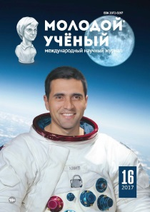Pronunciation is the way in which a word is pronounced, spelling does not determine pronunciation. The word pronunciation was originated from Latin pronunciation(n-), from the verb pronunciation. The word pronunciation is often pronounced, by analogy with pronounce, as if the second syllable rhymed with bounce. This is not correct in standard English: the standard pronunciation has the second syllable rhyming with dunce. The correct spelling is pronunciation, never pronunciation. It is closely connected with the following words: accent, speech, diction, delivery, elocution, intonation, articulation, enunciation, voicing, vocalization, sounding. In methodology pronunciation has been one of the issues that was difficult to teaching proper way, particularly to adult learners whose native language pronunciation usually dominates in second language acquisition. A number of scholars has worked on the issue of teaching effective strategies for teaching pronunciation. While some linguists’ opinions contradicts in meaning another group of scientists’ views support and complete each other.
He has indicated that there are four basic drill types:
- Simple repetition;
- Substitution;
- Transformation;
- Translating (5).
Earl W. Stevick in book entitled “Teaching and Learning Languages” (1982) has stated his ideas about positive and negative sides of using drills to teach pronunciation. In his book he pointed out that one of the basic or fundamental things in teaching language is pronunciation. One of the primitive and simple techniques in teaching pronunciation is pronunciation drills; to put in differently, teacher pronounces the word and learners repeat whether chorally or individually. The author has stated that drilling is rather dull and not so productive way of improving pronunciation. For this purpose it is considered as an old method, and rarely used in classes (9,). Likewise, Judy B. Gilbert considered repetition method as an ancient technique; at the same time, he says that repetition helps students to develop and grow in mastery. Another way of practicing pronunciation is Mimicry-Memorization. According to this activity learners learn by heart a dialog, it is a good practiced activity for auditory learners. That’s why, the author called this method as the cornerstone of the Audio-lingual Method. There are two reasons for not using this activity in current lesson planning:
- For some students this activity is rather quick while for other learners rather slow;
- As an activity is mechanical, it is considered as dull one and making dull learners’ mind (3).
Steve Norman with his article entitled “My 100 Mispronounced Words in English” (2000) contributed a lot of methods and activities in teaching particular sounds and words. Steve Norman coming up from pronunciation problems has stated that mispronunciation leads to confusion and misunderstanding. Accordingly, he decided to make a list of 100 mispronounced words in English that Spanish and Catalan speakers tent to pronounce not in a proper way. He suggested some activities in order to overcome mispronunciation:
- To break words in syllables;
- To teach stress pattern of a word;
- To draw attention to silent letters. For instance, “l” in words “could”, “would”, and “should”.
Dr. Helen Fraser in book entitled “Teaching Pronunciation: A Handbook for teachers and Trainers. Three Frameworks for an Integrated Approach” (2001) suggested her own method in teaching beginners and more advanced students. Stating the importance of teaching pronunciation in Beginner level the author has noticed that student can be beginner in pronunciation, even if he or she has much more high level on vocabulary and grammar. The importance lies in obeying future communication problems between native speakers and ESL learners. The author gave specific strategies for improving pronunciation in Beginner level. They are given in chronological order:
- Starting with word and phrases;
- Teaching stress;
- Teaching word stress;
- Sentence stress;
- Helping beginners with individual sounds;
- Using IPA symbols;
- Using critical listening;
- Organizing a communicative framework for learners.
The author pointed out even intermediate to advanced level students having good proficiency in grammar, vocabulary, and literacy can have problems connected with pronunciation. The author suggested to start with assessing learners’ pronunciation needs by involving them in general conversation, which is helpful in identifying their pronunciation flaws. Moreover, it is better to record the conversation in order to make diagnostic analysis.
While characterizing each level’s features the author noticed following in intermediate level students:
- They can identify stress, at least intuitively;
- Their speech is characterized by being too fast or too slow with use fillers even in inappropriate places;
- They can skip significant consonant or mix up some vowel distinctions.
The author gave specific strategies for improving pronunciation on intermediate level. Following components demand more attention:
- Stress and intonation;
- Rhythm and phrasing;
- Dictionaries and IPA (2,).
References:
- Abduazizov A. A. (2007). English Phonetics. A Theoretical Course. Tashkent: Musiqa.
- Fraser, Dr H. (2001). Teaching Pronunciation: A Handbook for teachers and Trainers Three Frameworks for an Integrated Approach. Department of Education Training and Youth Affairs (DETYA).
- Gilbert, J. B. (2008). Teaching Pronunciation Using the Prosody Pyramid. U.K.: Cambridge University Press.
- Iriskulov M. T., Shatunova A. S., Muzykina A.A (2007). English Phonetics. Tashkent.







